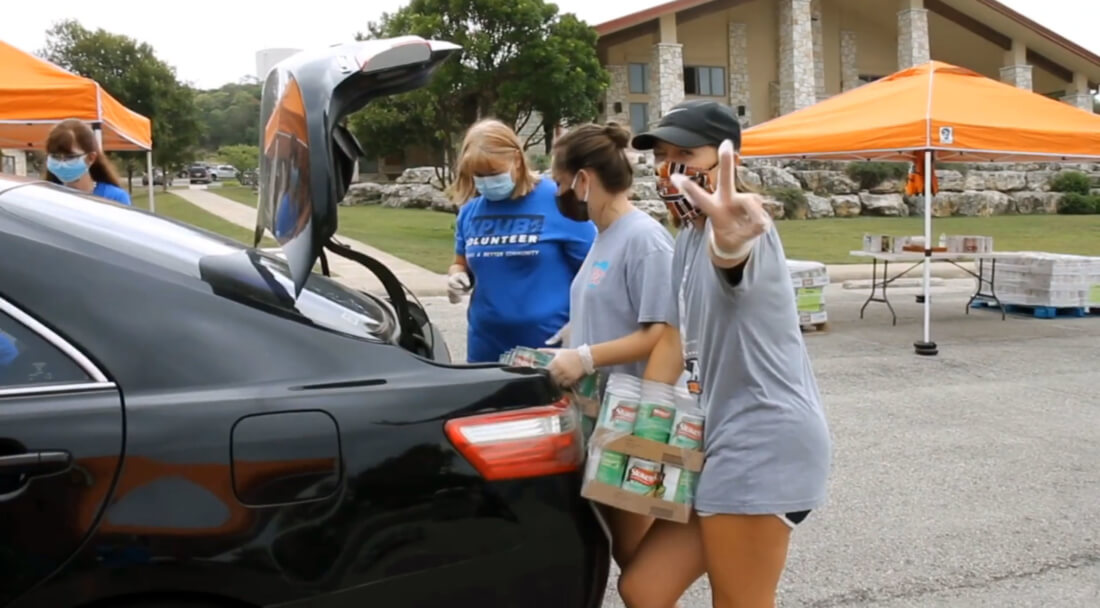
Since the pandemic began, individuals and organizations in Kerrville have given generously to support growing need for local families.

The line of cars stretches down the street on distribution day, each family waiting their turn for a small donation of food from Mustard Seed, St. Vincent de Paul, CAM, or the Doyle Center. Since April, Kerrville food banks have distributed three times as much food as normal.
People in Kerrville are struggling.
“Prior to covid, Mustard Seed would see 30 families” on a Monday, explained Beth Palmer, outreach ministry director for the program. Since the pandemic began, they have served nearly 2700 families.
Two city council members, Judy Eychner and Delayne Sigerman, wanted to help. Together with Austin Dickson, executive director of the Community Foundation of the Texas Hill Country, they set up the Kerrville Food Relief Fund.
“We realized how many people were losing their jobs because of Covid,” Eychner said, “and many of them would not normally be in a position of needing food.”
And the community has rallied—to the tune of $107,000 already. Locally, 178 individuals and businesses have contributed as well as three local organizations. KPUB employees raised $5000; The Cailloux Foundation donated $10,000; the H. E. Butt Foundation donated $25,000 and an additional $16,000 through an employee corporate matching gift campaign.
“We realized how many people were losing their jobs because of Covid.”
“As of July 9, we’ve awarded $65,880 to Kerr County food banks,” said Dickson.
Each distribution ministry looks a little different, and local food relief organizations report how they use funds. For example, a $2500 grant to St. Vincent de Paul in Kerrville purchased 15,000 pounds of food through their partnership with the San Antonio Food Bank. Based on the USDA’s What We Eat in America, that amount of food would provide 1000 families with three full meals.
Even before the pandemic, too many households were struggling to thrive in Kerrville. According to a 2018 demographics report from the city, 38% of households were already making less than $35,000 per year, and that was when unemployment in Kerrville was sitting at 3.6%. According to the Bureau of Labor Statistics, Kerrville jumped to more than 10% unemployment in April and May.
“The way things are headed there could be more jobs that won’t be restored or even more jobs that will go away completely,” said Eychner. “We need to keep doing what we are doing and looking out for those that need food.”